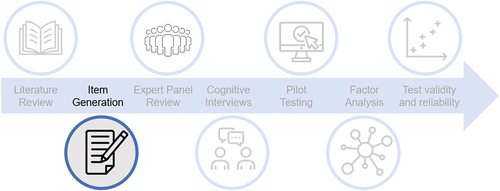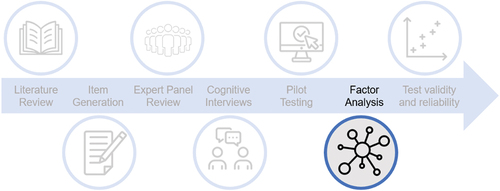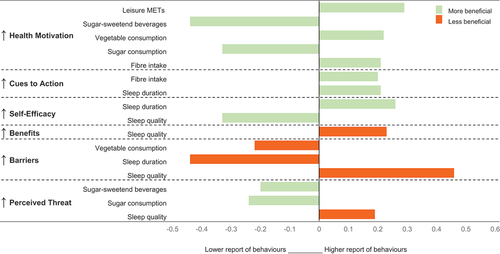Figures & data
Table 1. Psychosocial determinants proposed by health belief model with brief explanation.







Table 2. Demographics of sample that completed HBM-SW scale.
Table 3. Final scale items and results of factor anaylsis for Health Belief Model for Shift Workers Scale (HBM-SW).
Table 4. Measures of reliability outcomes presented by subscale.
Table 5. Correlations between HBM-SW subscales and outcome measures.
Figure 1. Visual representation of significant correlations between HBM-SW psychosocial determinants and health behaviors.

Table 6. Kruskal–Wallis tests between behavioral specific subscales (by low, average, high) and relevant outcomes of interest.
